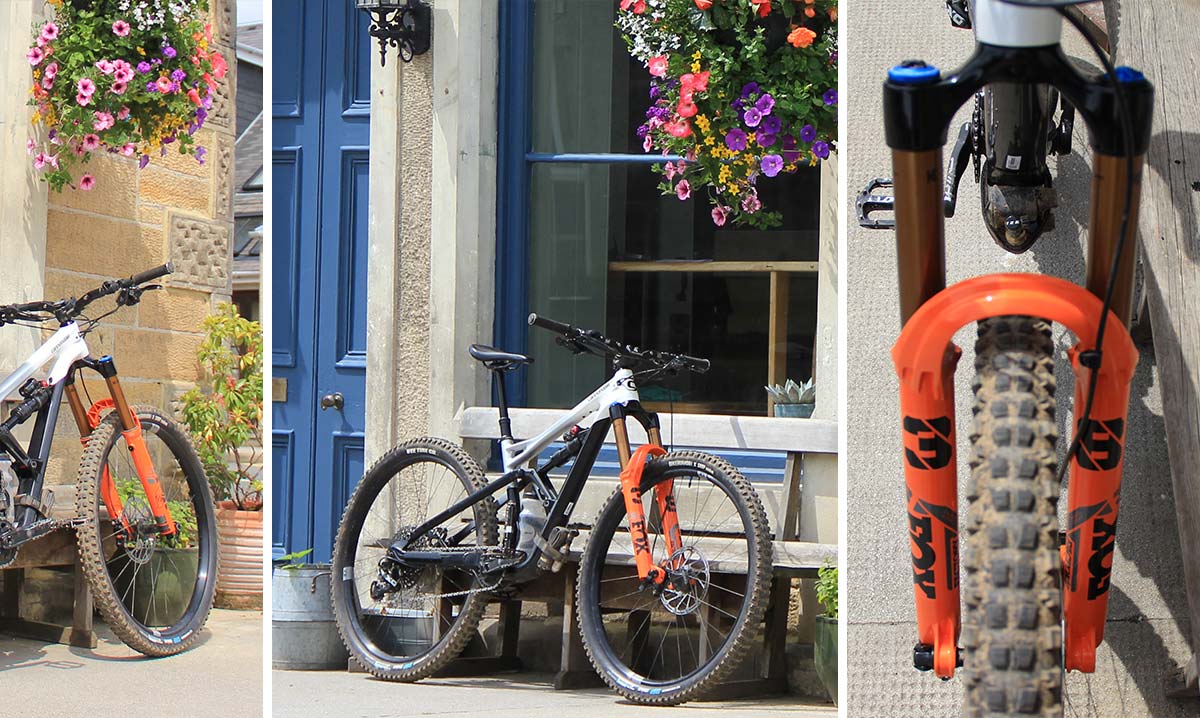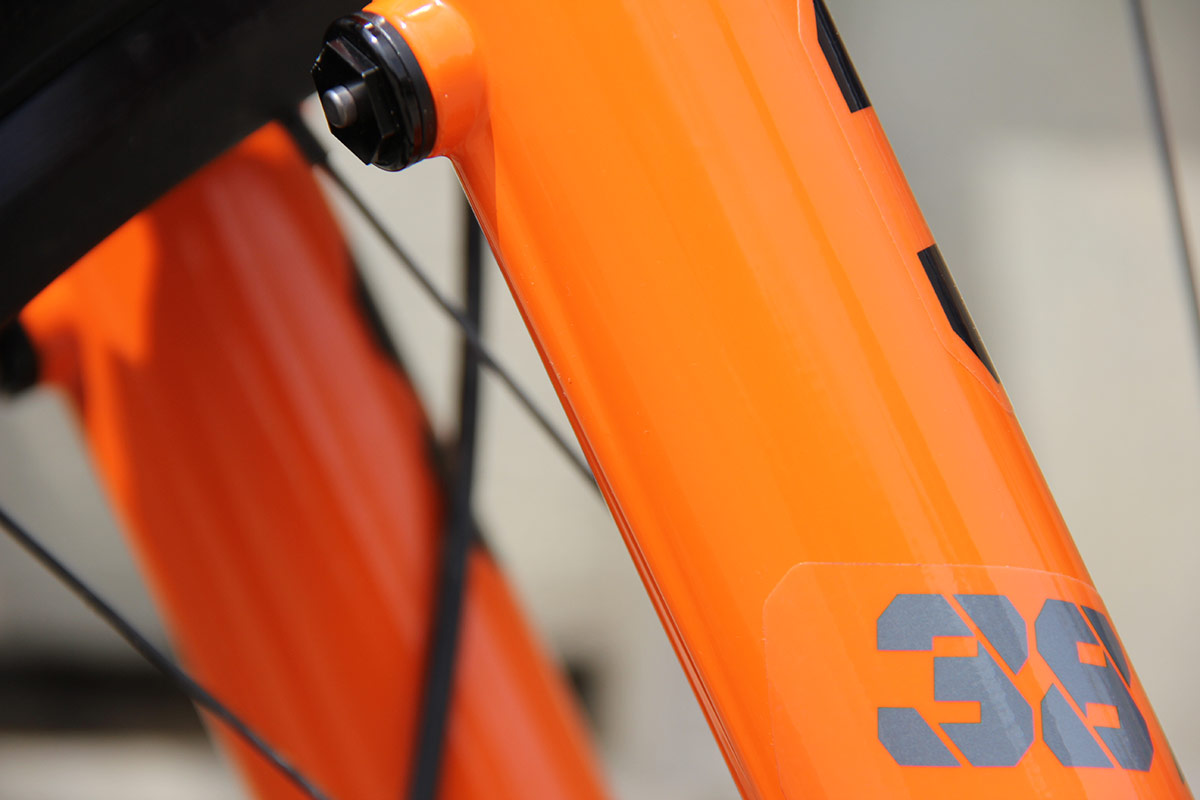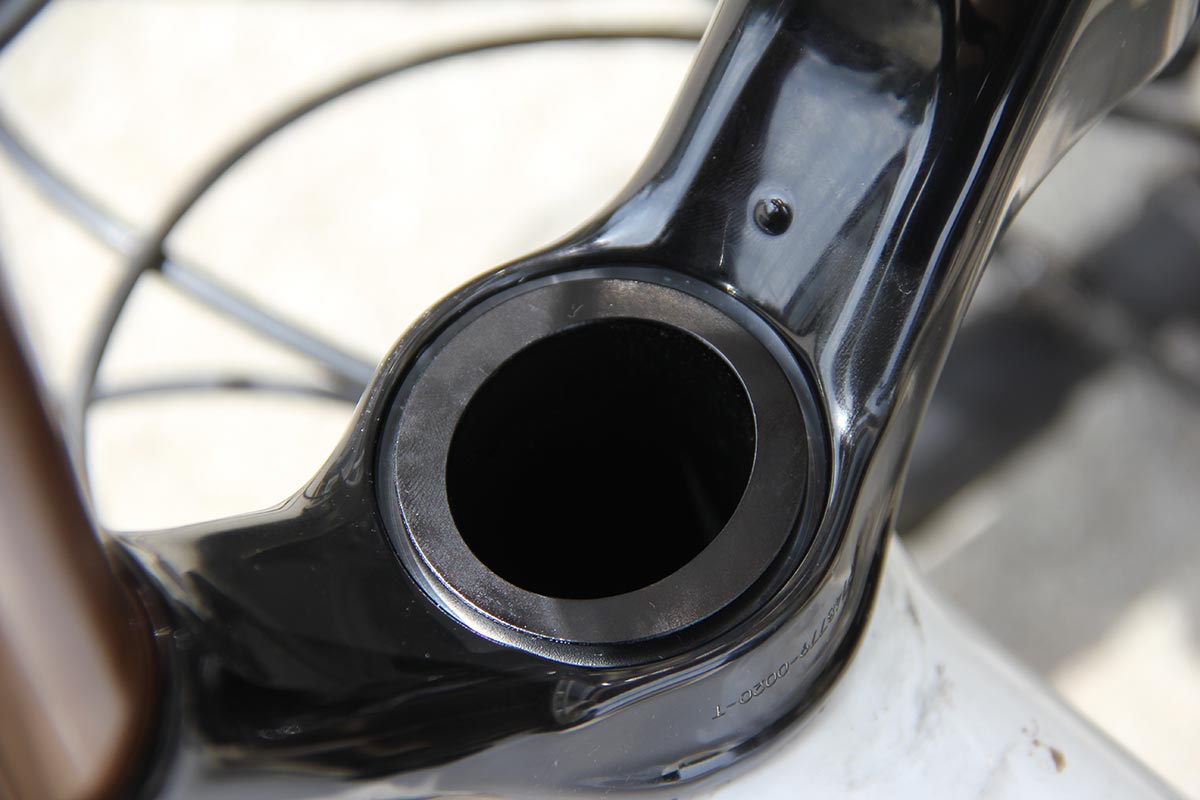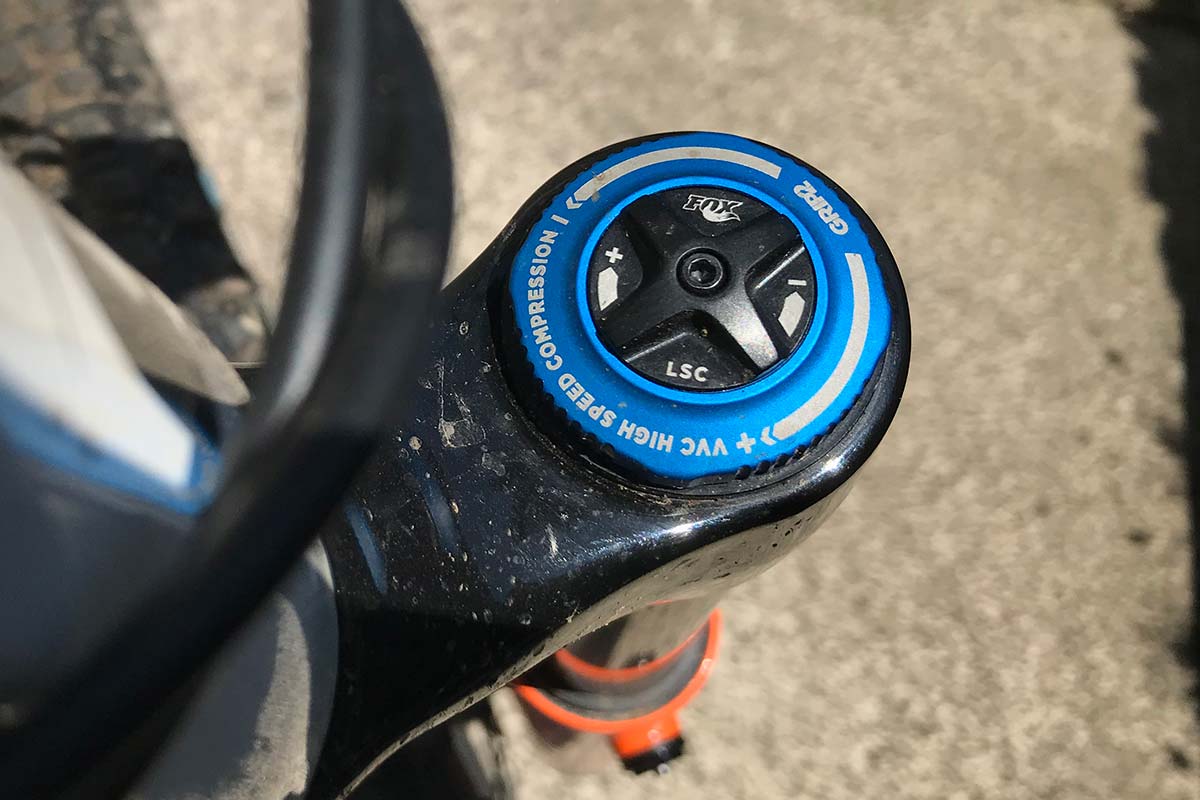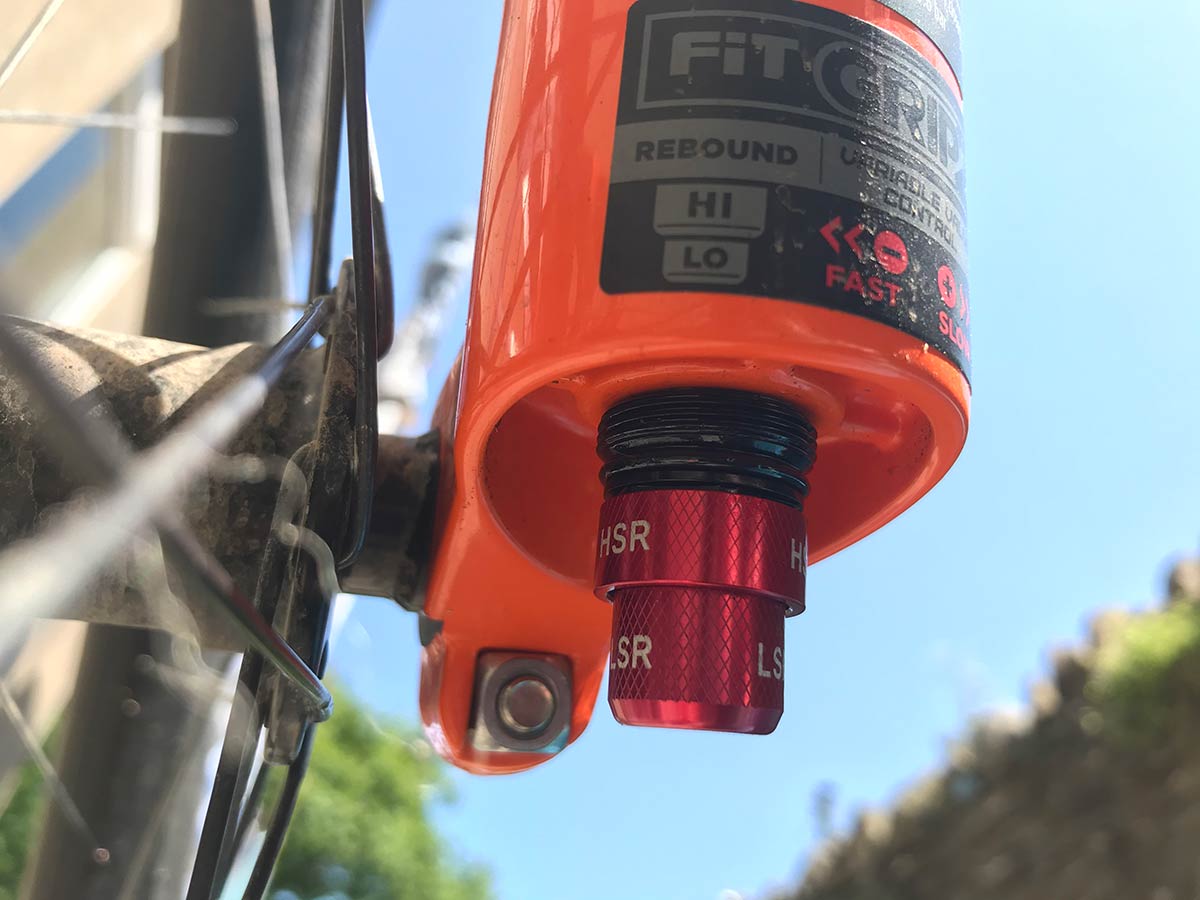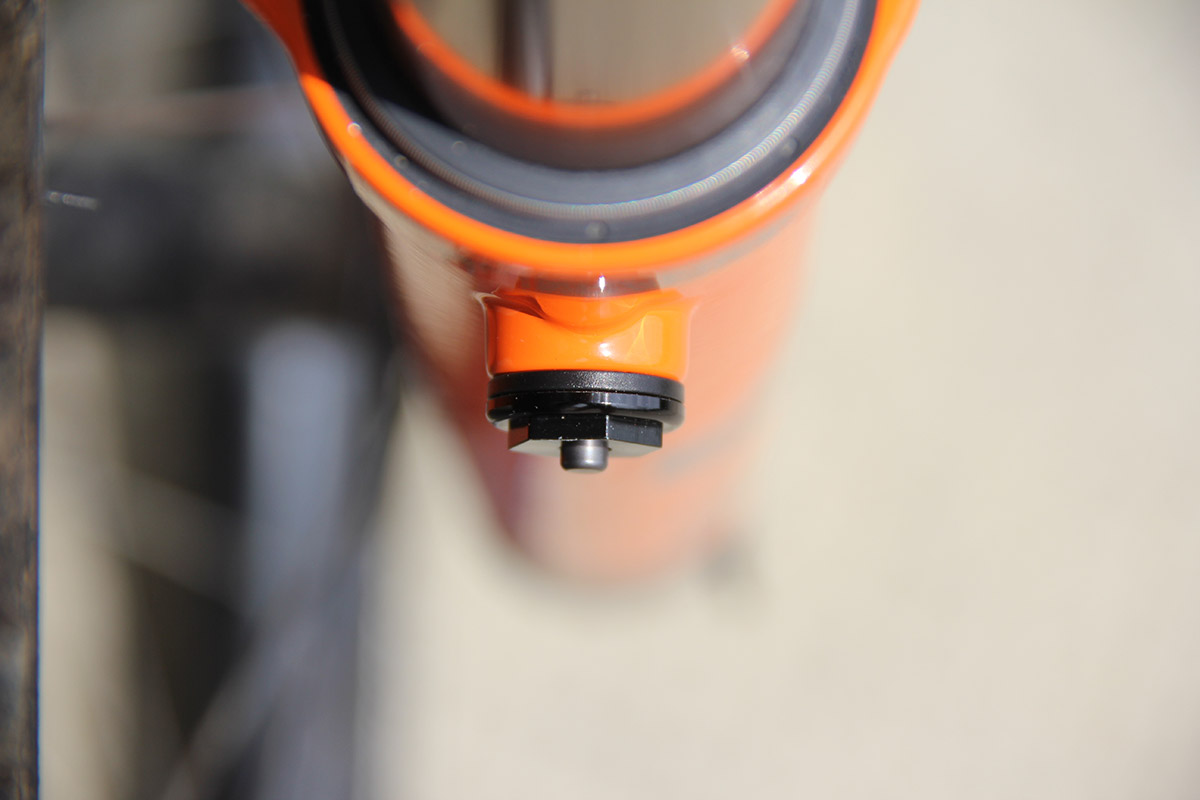Spring 2020 saw the downgrading of the much-loved Fox 36 enduro fork to the “all-mountain” category, making way for the all-new Fox 38. With stanchions just 2mm wider, the 38 is now their long-travel enduro specialist. We’ve been riding the 160mm travel, 44mm offset Factory level fork with the GRIP2 damper on our Cannondale Jekyll 29 enduro bike since June 2020.
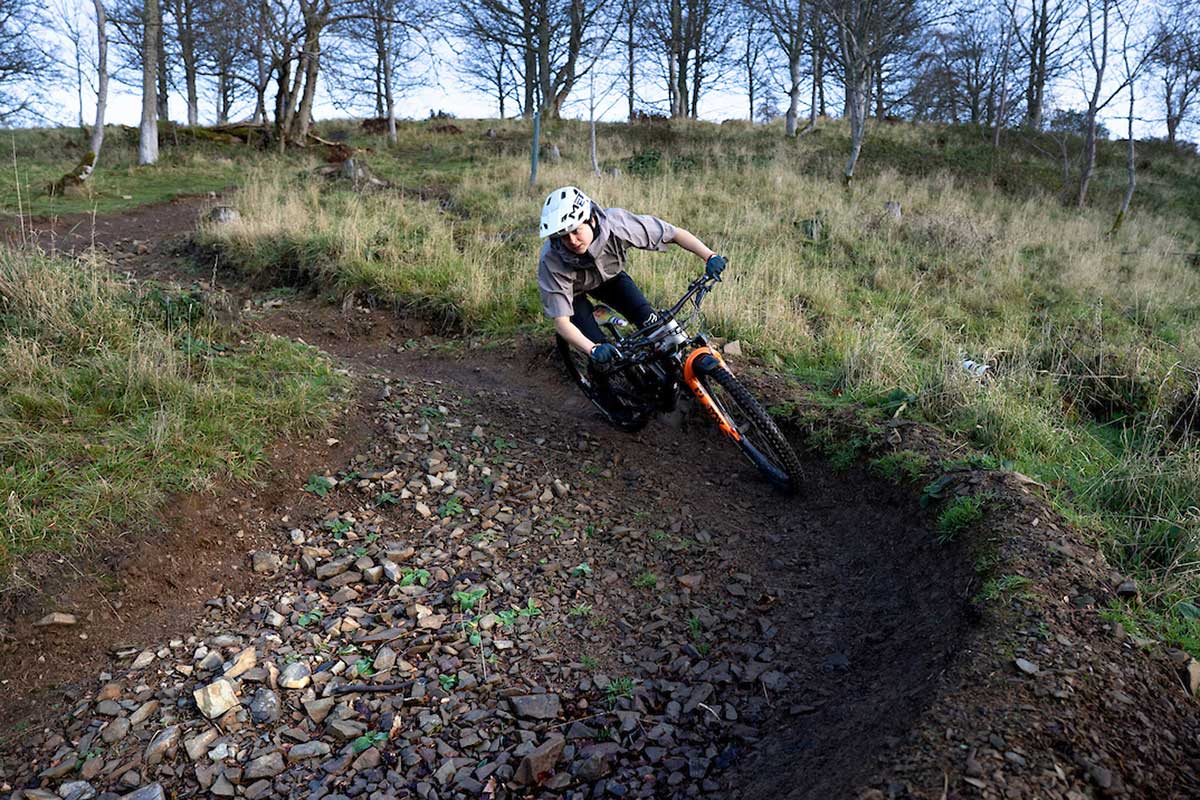
Lock down limited our riding to the local Tweed Valley enduro tracks initially. But, when travel was permitted, we took this fork to the fast-paced DH tracks of Pila, Italy, the 10 minute enduro stages of EWS Zermatt, Switzerland, and the sculpted berms of the Black Mountains Cycle Centre, Wales. Here’s how we got on.
Feature Image by James Hudson. Location: Black Mountains Cycle Centre.
Review: Fox 38 Factory Fork with GRIP2 VVC Damper
Just as you’ll see across the FOX suspension fork line-up, the FOX 38 is available in Factory, Performance Elite, Performance and E-Bike models, with VVC GRIP2 and GRIP dampers and updated EVOL Spring. It can run 160mm-180mm travel, available with a 37mm, 44mm, or 51mm rake.
We tested the FOX FLOAT 38 Factory fork (in orange because it’s faster). Believe it or not, there’s a lot more to this fork than its namesake 38mm stanchions. From elliptical steerers, to lower leg bleeders, the new 38 is crammed with new tech that’s worth getting clued up on. For an in-depth run down see our previous tech piece.
Without diving into too much detail, for the purposes of this review it’s worth noting a few things. Firstly, FOX wanted to make the 38 much stiffer and smoother than its little brother, the FOX 36. They succeeded, at least on that first count.
A redesigned arching crown, thicker stanchions, an elliptical steerer tube and a floating axle came together to make the fork 31% stiffer under transverse shear, 17% in the fore/aft plane, and 38% stiffer torsionally.
Secondly, the FOX FLOAT 38 Factory fork we tested has a new GRIP2 damper. It now utilizes their VVC (variable valve control) technology on the compression circuits as well as the rebound circuits. Check out our tech piece to find out how that works. What does it means for the rider? Instead of the former 27 clicks of High Speed Compression adjustment, there are now just 8, matching the number of HSR settings.
| Damper Adjustment | Number of clicks |
| High Speed Compression (HSC) | 8 |
| Low Speed Compression (LSC) | 16 |
| High Speed Rebound (HSR) | 8 |
| Low Speed Rebound (LSR) | 16 |
FOX FLOAT 38 Factory Set-up
For my first ride, I set up the fork as per the manufacturer’s recommendations. My 60kg rider weight suggests 77 PSI for the EVOL air spring. That’s more than you might expect, right? Despite its thicker stanchions, the 38 actually runs a smaller positive spring volume to make way for the extra volume negative chamber. That left me with around 18-19% SAG, sitting on the plusher side of the fence.
I ran the HSC at 5 clicks and the LSC at 10 clicks, both from fully closed. On the rebound end, I set the HSR to 7 clicks and the LSR to 8 clicks from closed (fastest). While dialing in the clicks, I noticed the detents of the HSC, HSR and LSR provided very positive feedback, while the LSC adjuster provided little to none. You have to pay very close attention to feel for the clicks when adjusting the low speed.
How does it ride?

On our trip to the Black Mountains Cycle Centre (BMCC) we ran the FOX 38 with the recommended factory settings. Starting with the faster tracks at the Bike Park, terrain included smooth sculpted berms, interrupted only by flat out sections with tables and rollers for sending and pumping through.
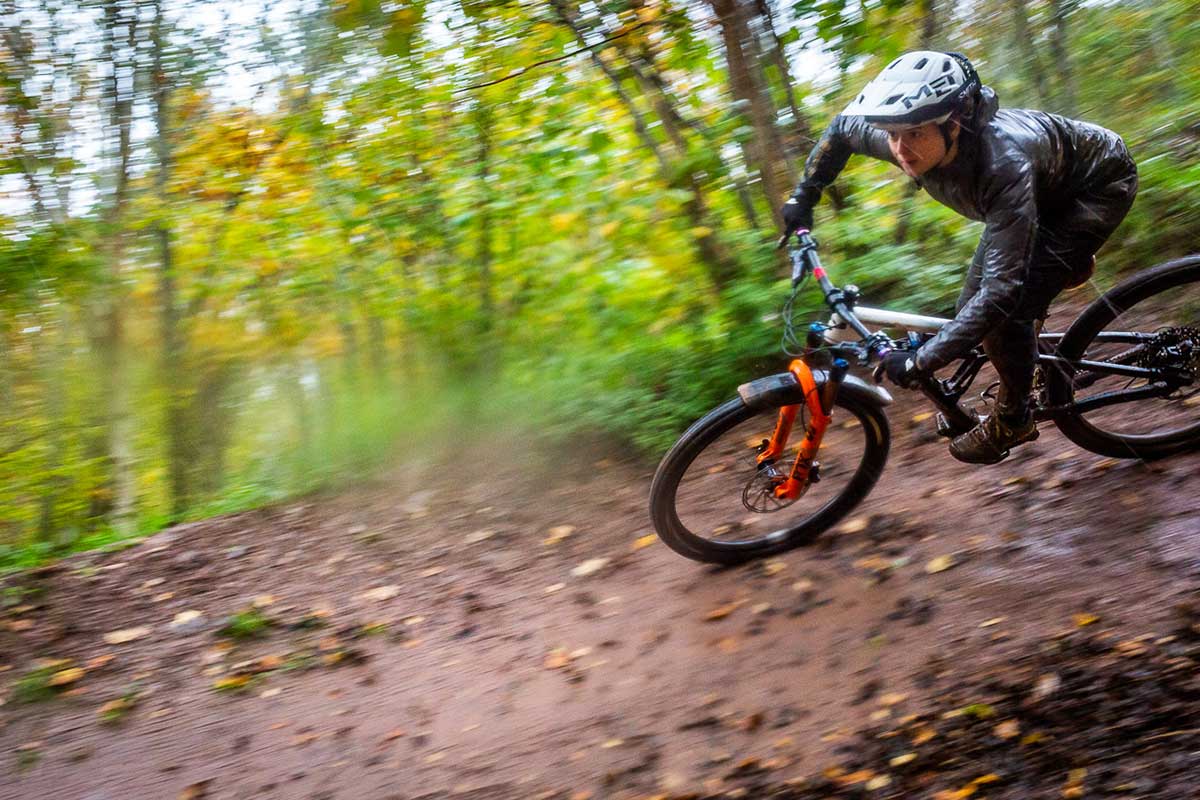
The fork was wonderfully supportive on these tracks. The aforementioned settings held the fork up nicely in its travel through compressions in fast, sweeping corners. The front end remained true to the lay of the land over rougher sections providing ample and reliable traction. We experienced no “packing down” over braking bumps. That’s testament to the damper rebound circuit’s ability to ensure return speed was sufficient.
Bringing the fork back to my local trails in the Tweed Valley, I put the recommended settings to the test on much steeper, rougher trails. On this generally much tougher terrain I noticed the FOX 38 has a certain sturdiness about it. You’ll immediately appreciate the solid-feeling front end of your bike when you stick one of these on it.
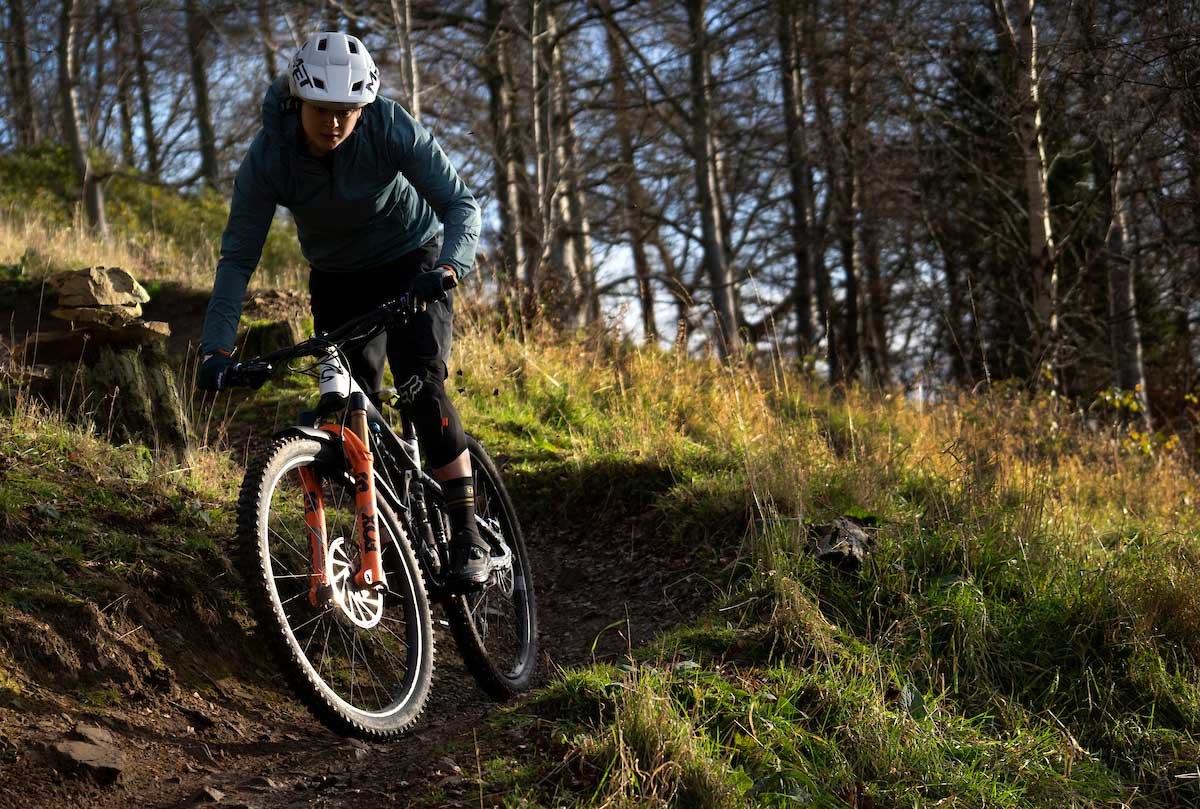
Can I be more specific? Yes. The weightiness and stiffness of the 38 can make the bike’s steering feel a little sluggish, especially for a (relatively speaking) rather under-gunned rider such as myself. But, that’s not necessarily a bad thing. Through rocky chunder and root-riddled off-camber high lines, the fork bestows confidence to hold the intended line.
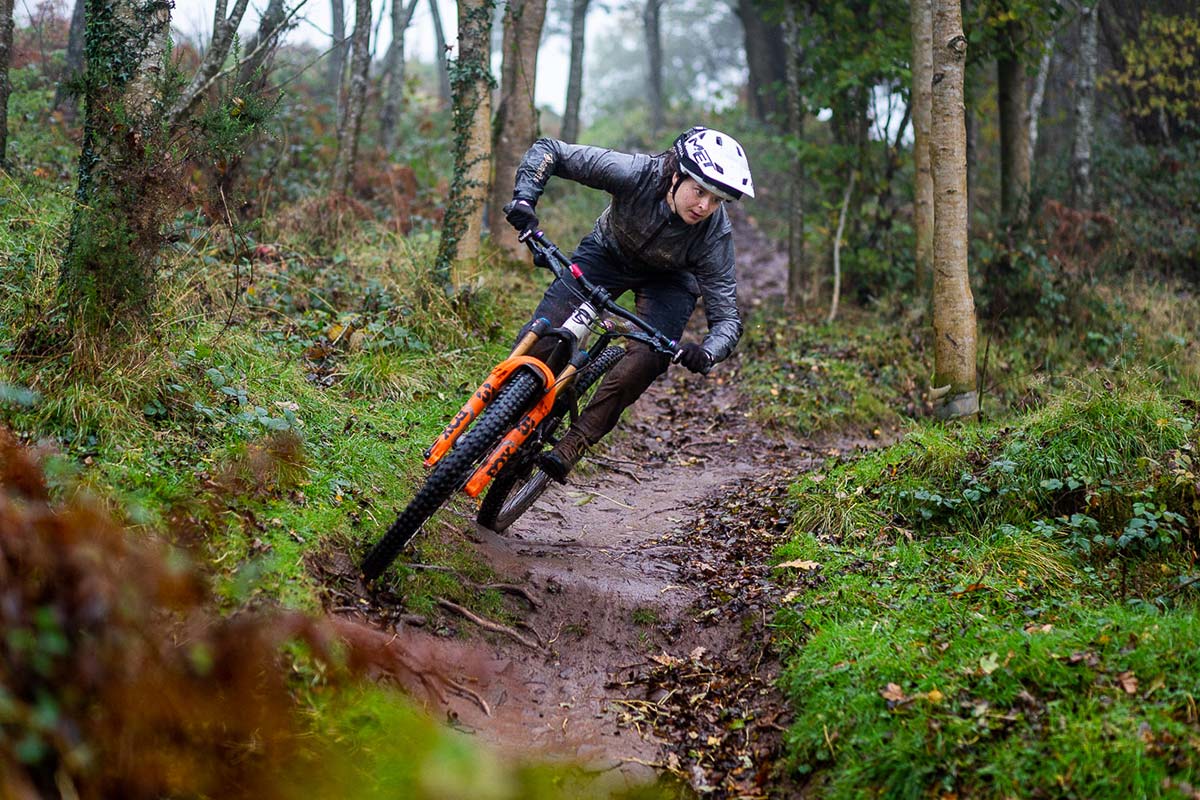
Departing from the FOX 38 recommended settings
The sturdiness of the fork wasn’t quite matched by the sturdiness of the rider, however. While its plough-like capabilities encourage faster speeds through rough, choppy terrain, the rider still has to deal with the consequences of those bigger, more rapid successive hits.

Of course, the better physically conditioned the pilot is, the more he or she can take advantage of the fork’s capacity to hold fast. But, that’s the case for any bike or piece of suspension. In this case, the early onset arm pump led me to back off the HSC and LSC a couple clicks to make the front end of the bike a little more supple and forgiving.
These adjustments weren’t significantly detrimental in terms of ride quality, and the fork was still able to sit up nicely in its travel without any horrible diving sensations. I left the HSR and LSR as they were, close to fully open. The rebound characteristics were well-mannered in this setting, never feeling remotely under-damped.

Did we use the lower leg bleed valves?
Yes, but probably not to any great effect… it’s hard to tell. These exist to to reduce air pressure captured in the lower legs when riding at altitude or when descending for long periods in hot climates. I raced the EWS in Zermatt, Switzerland, so got some pretty high altitude descending in on the FOX 38. And, the stages were over 10 minutes long (for me).

Pressing the bleeders resulted in an infinitesimally small amount of air being released. With that air came a small dribble of oil. That’s not really meant to happen as there is a seal that sits inside the valve. Nevertheless, it wasn’t enough to cause a problem and I simply wiped it away with a glove.
Is it smoother?
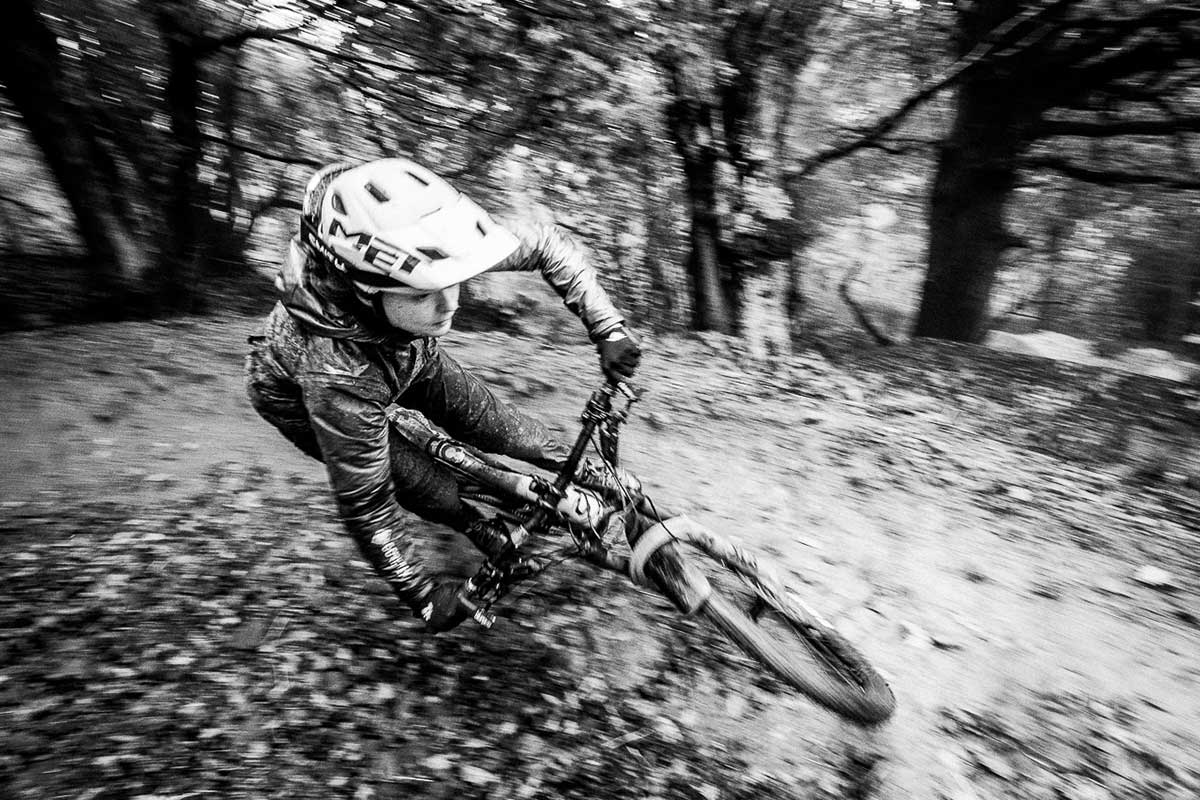
I will say the fork is smooth, but I don’t think I can say it is smoother. That’s because I never felt as though the FOX 36 GRIP2 I ran previously wasn’t smooth enough. What I can say is that the fork is nicely plush off the top of the stroke. Its sensitivity here is noticeable, allowing the bike to smooth out general low-level trail chatter without fuss.
Do I need one?
It depends. I see you rolling your eyes, but bear with me. Need is a strong word, and I would hesitate to use it here. The real question is, is there a tangible performance benefit to be had with a FOX 38 over the FOX 36? For me personally, the answer is probably not.
The increased weight and stiffness of the fork did offer a more stable and predictable ride. It encouraged me to charge harder at rough sections of trail I may have previously had more respect for. However, there was a price to pay in the form of more rapid fatigue onset, especially in the forearms.
For others with a much stronger, more conditioned upper body, the fork offers the promise of those same benefits but perhaps without so much of the fatigue. That’s me off to my home gym…
